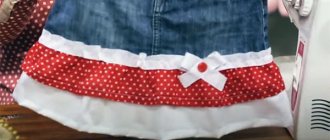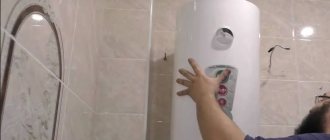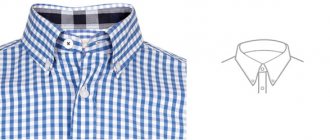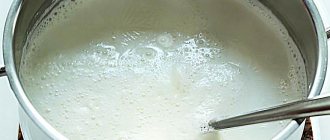If you need to beautifully decorate various decorative details in the interior, there is a win-win option - molding. Under this term there is a raised bar (flat or with various profiles, relief patterns), which is used as a decorative element. You can glue moldings onto walls, suspended ceilings, arched openings, mirrors, trims, and doors. There are also furniture options.
Why glue decorative plinths?
Beautiful moldings also perform purely practical functions:
- they can be used to zone space;
- gluing moldings on top of wallpaper allows you to hide or disguise existing defects;
- strengthening and sealing joints between various materials covering the surface;
- creating frames;
- emphasis on the desired interior detail or, conversely, diverting attention from unsuccessful elements that cannot be removed.
You can also attach molding to mechanically protect the surface.
How to glue moldings to a wall or ceiling: general rules
Each specific case has its own specifics. If you need to glue moldings to a wall with wallpaper, the task will be different from gluing it to a primer.
General recommendations are as follows:
- Surface preparation: cleaning from dirt, degreasing, and leveling if necessary.
- Primer (necessary to improve adhesion and reduce glue consumption), if necessary, paint.
- Marking: you should draw lines along which the planks should go. To do this, it is convenient to use a level and plumb line.
- Before gluing, all planks and other materials must be kept in the room for sufficient time so that they reach room temperature. This usually takes about a day.
- Cutting corners at 45° for a strong connection. For this purpose, it is better to use a special tool – a miter box.
The back side of the planks is covered with glue, then pressed tightly to the desired location. You need to press along the entire length. Therefore, if the planks are long, it is better to work with an assistant.
You need to press until the glue sets. Then the element is released and the adhesive is allowed to dry completely.
The joints are treated with joint glue, which is applied generously. After pressing, excess glue comes out - they are quickly wiped off with a rag.
Complete drying is achieved in about two days. After this, the elements can be painted and gilded.
Varieties
The molding is different in shape, textured pattern, and material. Each type has its own characteristics and characteristics. There are wide stripes with a relief pattern applied for large rooms, as well as thin light stripes used in the interior of small rooms to brighten and visually enlarge.
Wooden
Wood molding is valuable because of the material. Eco-friendliness and appearance make it an expensive finish. It is heavy, so the planks are secured with self-tapping screws.
However, after treating with antiseptic agents and water-repellent mixtures, the finishing is used in the corridor and on the balcony.
Polyurethane decorative overlays
Polyurethane finishing is a combination of quality and price. It is popular because it has advantages:
- strength and long service life - for about 30 years, polyurethane molding will decorate the walls and ceiling;
- ease of installation - fastening is done using glue;
- ease of cleaning;
- they are not affected by temperature changes;
- are available for sale in a wide range of colors.
Planks are used in the kitchen, bathroom, and for zoning a room.
Metal decorative strips
Decorative strips in silver, bronze and gold decorate the walls. They create an expensive, beautiful interior of the room. With this decoration, the room looks rich, so trims for precious metal and ordinary paper wallpaper are incompatible.
Finishing is done for mirrors, fireplaces, niches. To choose a color, you need to consult a designer.
Foam wall molding
Gypsum moldings for a niche
Gypsum finishing has the following advantages:
- appearance;
- there is a possibility of restoration;
- environmental friendliness;
- does not lose its color over time;
- don't burn.
The disadvantages are the price - they are relatively expensive. And a lot of weight, which leads to difficult installation.
Plastic wall molding
Plastic baguettes are popular for several reasons:
- ease of installation;
- it is possible to paint it in the desired color;
- ease of care;
- not afraid of temperature changes and high humidity.
The disadvantage is the grainy surface.
Step-by-step instructions
Installation of decorative strips does not cause difficulties even for people with no experience. You don’t have to look long for something to use to glue moldings to the wall either. One of the best solutions is Ultima 302 adhesive for panels and moldings 360 grams.
How to properly glue moldings to the wall
Many people doubt whether it is possible to glue moldings to wallpaper. This option for wall mounting of overhead strips is quite acceptable. True, the service life will be somewhat shorter. In addition, if you need to change the wallpaper, you will have to remove the molding along with it. But if such a situation seems acceptable, then nothing prevents the installation.
The sequence of actions on how to glue molding to wallpaper is quite simple. But you need to act very carefully. If you use too much glue, drops of it can ruin the appearance of the walls.
Before you start gluing, if possible, you should try to clear the wall of wallpaper in the place where the plank will go. This will increase the reliability of the fastening. If such preparation seems too labor-intensive or completely impossible, in this case it is better to glue the molding with mounting adhesive with maximum adhesion.
The order of stickers is standard:
- Keep all materials overnight at room temperature.
- Mark the mounting points.
- First glue the corner elements.
- Attach straight sections to the corner parts.
If the plank is too massive, you will have to additionally secure it with self-tapping screws. After the glue has completely dried, the screws can be removed, and the places where they were can be carefully covered with putty.
To achieve a harmonious color composition, the trim strip may need to be painted. It is recommended to do this no earlier than 24 hours after all the planks have been attached.
Interior decor with molding: tips
First, let's figure out why a wall with moldings is so attractive. As soon as moldings find their application in the interior, the room immediately becomes much more refined.
Products can act as a separate decorative element or complement the main style. In particular, they are used as dividers for wallpaper of different colors.
When decorating surfaces, wall molding allows you to combine together seemingly incompatible decorative elements. For example, they can be used to decorate completely different types of wallpaper, wallpaper and paint, as well as other types of ceiling and wall decoration.
The overlays will look appropriate in almost any room. They are used in the bathroom, kitchen, bedrooms, etc. Also, with the help of these products, a certain area of the wallpaper is isolated, making an original frame around it. A rather original solution is the design of the window, thereby creating a stylish frame around the perimeter of the window frame.
You should choose wall molding in accordance with the overall style and size of the room. For example, for small rooms it is better to take thin planks, which will eliminate the effect of cramping the already precious square meters. If you manage to choose the right decoration, you can benefit from the area of the room, making it visually larger or, conversely, less empty.
Why are decorative plinths glued?
These products are used mainly for design reasons. However, overlays also have several other important effects.
They should also be taken into account:
As you can see, there are really many benefits from gluing decorative strips. Now let's focus on when wall moldings are not recommended.
Where should you not glue wall molding?
So, on the Internet there is often a question about whether it is possible to glue moldings on top of wallpaper. And not unreasonably, because in fact this often leads to sad consequences. Therefore, it is strongly not recommended to glue molding to wallpaper, because they will refuse to give you a guarantee that it will last for a long service life.
As you can see, wall molding should not be positioned as a universal material that can be glued to almost any surface. In addition, you need to be extremely careful with the adhesive material itself. After all, if adhesive residue gets on the wallpaper, it is difficult, and sometimes completely impossible, to remove it without leaving a trace.
In addition, there is a problem in painting the product. Most often, the overlays have to be painted to match the wallpaper, and if even a drop of paint gets on the canvas, the repair can be completely ruined.
Non-standard use of interior profiles
Interior wall molding is often used for purposes that are unusual for many. In particular, the products are used to decorate structural elements of furniture. Occasionally, decorative skirting boards can be used as decoration for various pieces of furniture.
Not so long ago, decorative overlays were used to decorate windows. Such profiles look great as window frames.
In addition, the planks are also used as frames for wall paintings. For example, if you don’t like wall paintings and prefer to paint directly on the wall. In this case, framing it with molding will be a truly unique solution, unlike classic design options.
How to choose glue based on the material of the molding and base
The correct solution to the problem of what to glue the decorative molding on ensures the durability of the installation. Therefore, before you start decorating the interior with molding, you need to carefully select the adhesive composition. This choice is determined by the material from which the overlay strips are made:
- For PVC panels and light plastic flexible moldings, PVA or wallpaper glue is suitable; you can also use powerful products for decorative elements. Glue for polyurethane skirting boards is also suitable.
- Polystyrene baguettes require solvent-free products. Acetone is especially dangerous for them. It completely corrodes the foam parts.
- Planks and heavy figured gypsum stucco molding are attached to polyurethane compounds or gypsum solutions.
- Products made from duropolymer require powerful mounting and joining adhesives. You need to select carefully, since different compositions are recommended for different impact-resistant composites.
- Massive wooden decorative overlays, as a rule, are so heavy that they have to be additionally secured with self-tapping screws.
The main rule for choosing glue: carefully read the instructions that come with each package.
Painting
The choice of paint depends on the material of the decorative elements. It should be without acetone. Before painting over mounting adhesive on wood, foam or plastic, be sure to remove any remaining residue with a knife or sandpaper and cover it with putty.
It is better to paint the joints before gluing them to the wall.
By painting a wide molding, you can give free rein to your imagination and highlight the ornaments with different colors.
As you can see, it is not so difficult to transform the appearance of a room and give it a solemn or discreet atmosphere with the help of moldings. And it doesn’t matter what you choose: decorating the walls with moldings made of polyurethane, plastic or gypsum, the main thing is to adhere to measures in the quantity and compatibility of relief elements.
Source
What to do after gluing
The pads do not require complex care. The composition is fanned from time to time with a soft feather broom and wiped with a slightly damp cloth. It is important to ensure that dust does not eat into the decorative relief elements. If you allow a large accumulation of dust, the molding may darken, and then it will have to be repainted.
Cleaning can also be done with a vacuum cleaner with a very soft brush. On difficult terrain, remove dust with a soft brush or cotton swabs.
It is better not to use cleaning agents, as they are too aggressive on painted surfaces.
The wood can be wiped with plain water, and if it is heavily soiled, washed with liquid soap.
Instead of an epilogue
An analysis of the market for adhesives for skirting boards has revealed that for the most part in the Russian Federation there are universal options like “liquid nails”. The remaining samples are unpopular due to their low functional properties, lack of high-quality equipment (for example, a construction spout), as well as outdated chemical composition. At the same time, it is worth noting that, as such, highly specialized compounds will soon fall into oblivion and most adhesives will simply be combined under the simple name of “installation adhesive.” The cost of such goods in Russia is very affordable, and the product range provides the maximum breadth of choice. At the same time, in this segment, up to 80% of goods are presented by foreign manufacturers.
How to wallpaper a wall with molding in the middle
Frame moldings look very noble. With this method of finishing, doubt arises: wallpaper or moldings are glued first. Experts recommend gluing the wallpaper first and placing frames on top of it.
If it is not possible to remove the moldings, then the wallpaper will have to be cut. When working with wallpaper, adjust the joints as carefully as possible. The easiest way to do this is with monochromatic options. The most labor-intensive adjustment process is when gluing photo wallpaper.
Embossed non-woven or patterned ones require more trouble. For adjustment you need to have 2-3 meters of reserve.
Material of slats
Molding is made from different types of plastic, wood, metal or plaster.
Type 1. Wood
Wood has been used for centuries to make applied decor.
This is a traditional material for making moldings. Wooden decor must be treated with an antiseptic, and then it can be varnished or painted. Self-tapping screws or glue are used to secure the planks.
Advantages:
- Wood is easy to process.
- It is reliable and durable.
- The material is easy to paint and glue.
- The tree is durable with proper care.
- You can cut holes in the wooden molding for the wires.
Flaws:
- The tree is not moisture resistant.
- It's expensive.
- Wood planks have a large mass.
Type 2. Gypsum
Very often, rooms are decorated with plaster stucco.
This is another classic material for applied decor. To install such molding with your own hands, use gypsum or alabaster mortar.
Advantages of gypsum decor:
- A variety of shapes, colors, relief and patterns.
- Long service life.
Flaws:
- High price.
- Plaster decor is heavy.
- The material is fragile.
- Complex and expensive installation.
Type 3. Polyurethane
Polyurethane can be flexible, making it convenient to decorate curved surfaces with such decor.
Polyurethane strips are now the most popular. They can be rigid or flexible. Therefore, they can also be used to decorate curved surfaces.
Advantages of polyurethane molding:
- The material is smooth and lightweight.
- It is easy to varnish and paint.
- It’s easy to work with, stick to the base, including wallpaper.
- The service life of polyurethane planks is about 30 years.
- This molding is inexpensive.
- The material realistically imitates plaster stucco.
- It is easy to care for.











